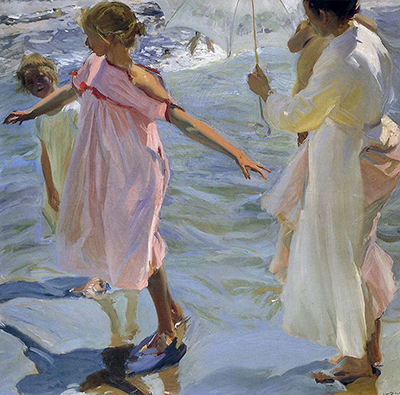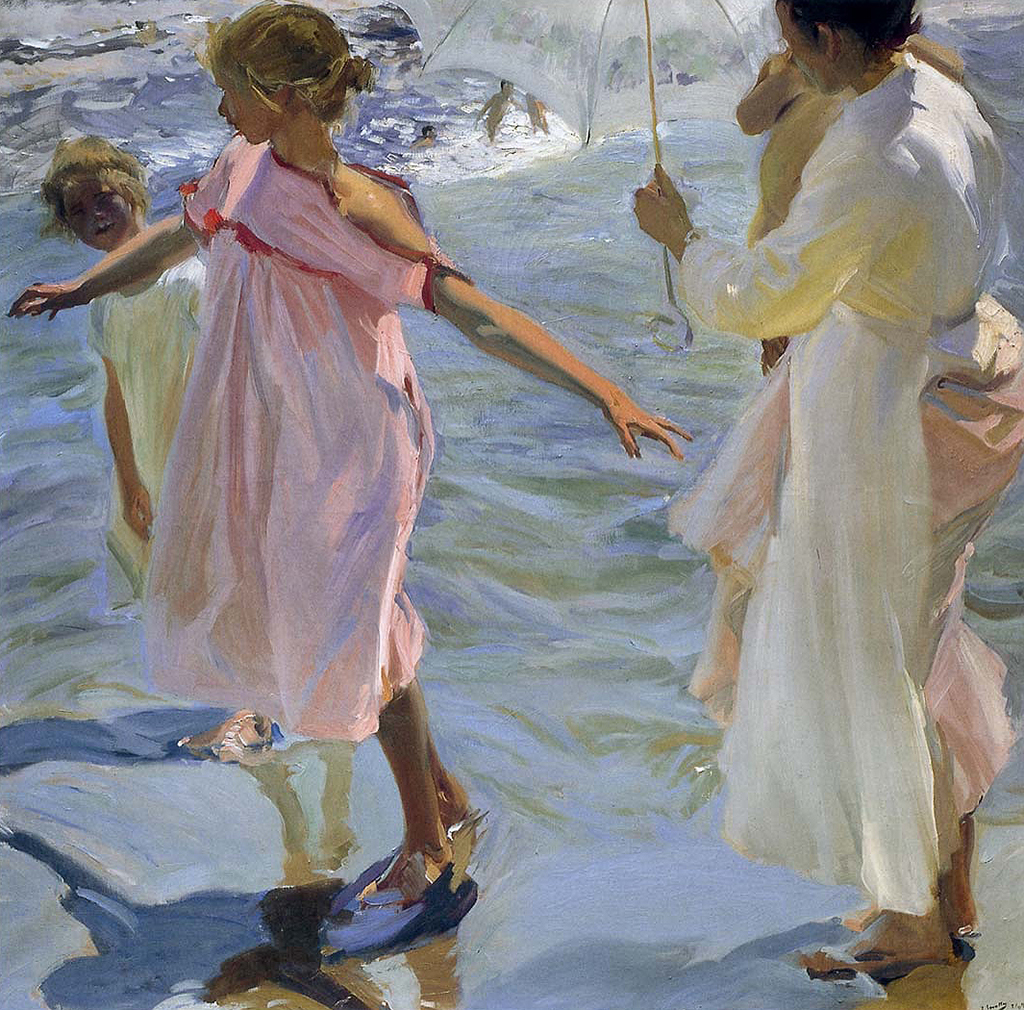 Buy Art Prints Now
Buy Art Prints Nowfrom Amazon
* As an Amazon Associate, and partner with Google Adsense and Ezoic, I earn from qualifying purchases.
This painting is sometimes known under the alternative name of Time for a Bathe, Valencia and that is probably due to inconsistencies in translations from the original Spanish name of La hora del baño, Valencia. It was completed in 1909 and now resides in the Sorolla Museum in Madrid, Spain.
This artwork captures several children out enjoying the beach lifestyle of Valencia in the early 20th century, whilst being joined by their mother who holds a parasol up in order to protect her youngest child from the fierce Spanish sun. The girls are of different ages, clearly, but share equally in the fun and excitement of splashing about in the sea, though they only venture in to a safe distance whilst others in the background throw themselves in completely. As the title suggests, it is likely that have already done much the same and swum around, but are now drying off and preparing to return to their homes. You may notice how the artist avoids any real use of perspective, with the horizon ignored, and this has the effect of immersing us into the lives of the figures in the foreground, with no other real distractions included.
There are no artists more famous for beach scenes as Joaquin Sorolla, who revisited this genre many times during his career. He adored the saturating light which enveloped the environment of the Valencian coastline and so was ideally suited to the latter part of his career when he opened up his palette to a brighter series of colours. He had now broken away from the influence of traditional Spanish art from previous centuries and was moving towards the Impressionist-esque approach that was already proving so popular over the border in France. He took inspiration rather than copy, though, and also took on some subjects which the French artists had not, ensuring a truly unique legacy which remains amongst the finest of any Spanish artist from any period. It was as if, with these paintings based around the beach areas of Valencia, that the artist had finally found the perfect combination for his career of content and style, having strived for it for several decades prior.
A visit to the Sorolla Museum in Madrid is the best way of discovering more about this fascinating artist. They have a good number of artworks from the artist's career, most of which would have arrived via the artist's foundation which he himself originally set up as a way of protecting his legacy and ensuring that a selection of his work would always remain accessible to the Spanish public. He purposely kept ownership of a number of his family portraits and would later gift these to the foundation as he felt a particular connection to the pictures of himself, his wife and also his children. You will notice how most of these portraits can now be found in the museum, where as the rest of his oeuvre is now dispersed widely across the world, including within a number of small private collections.




